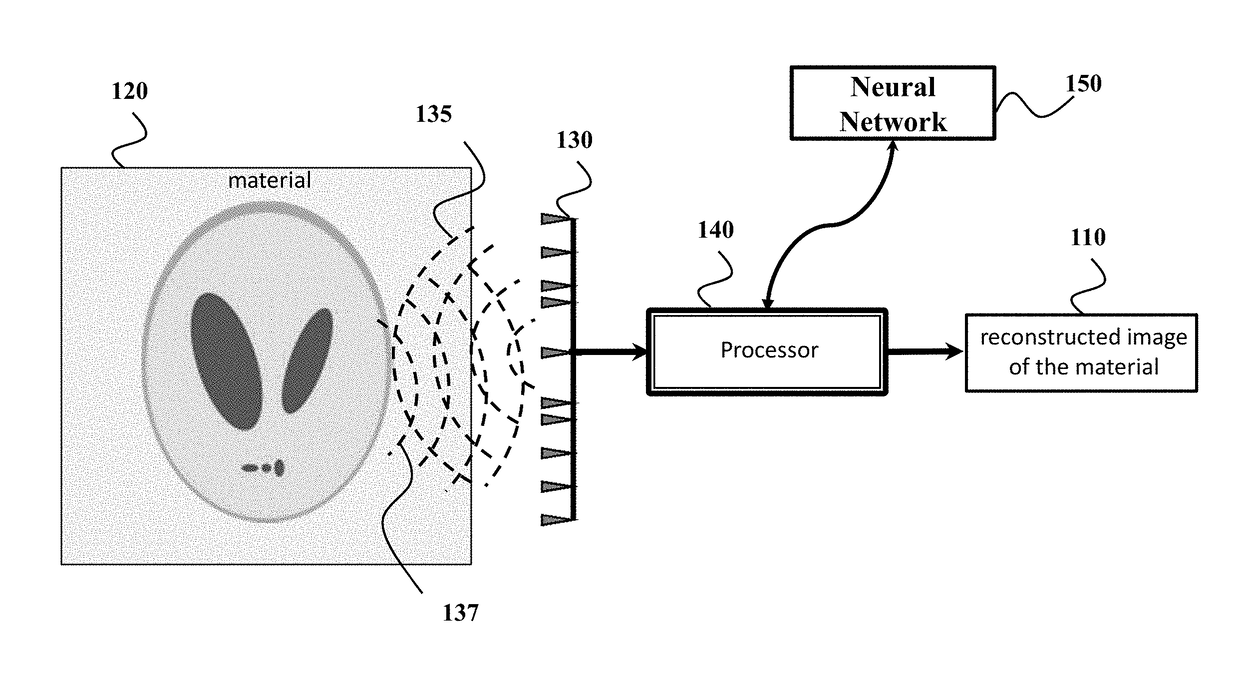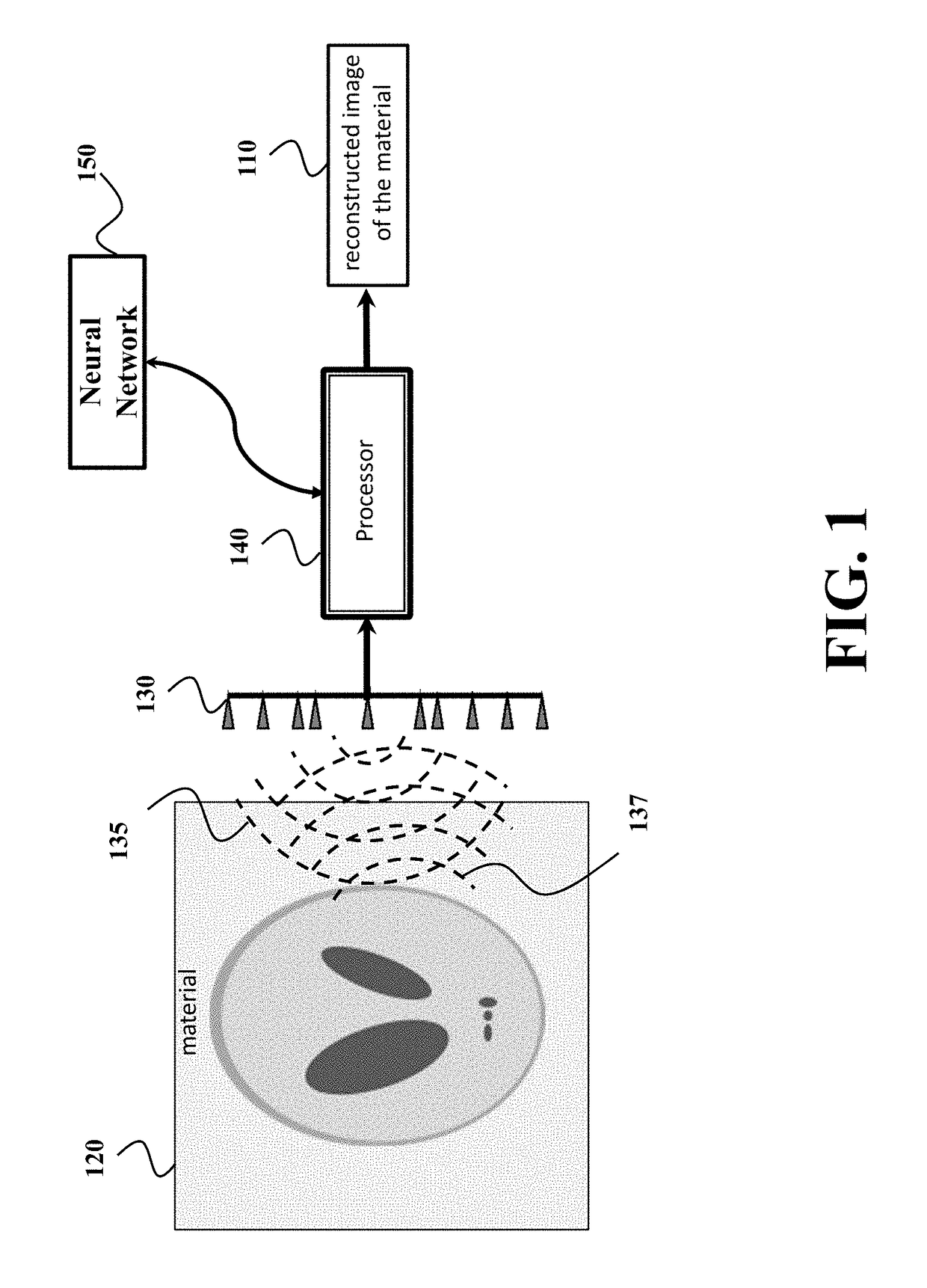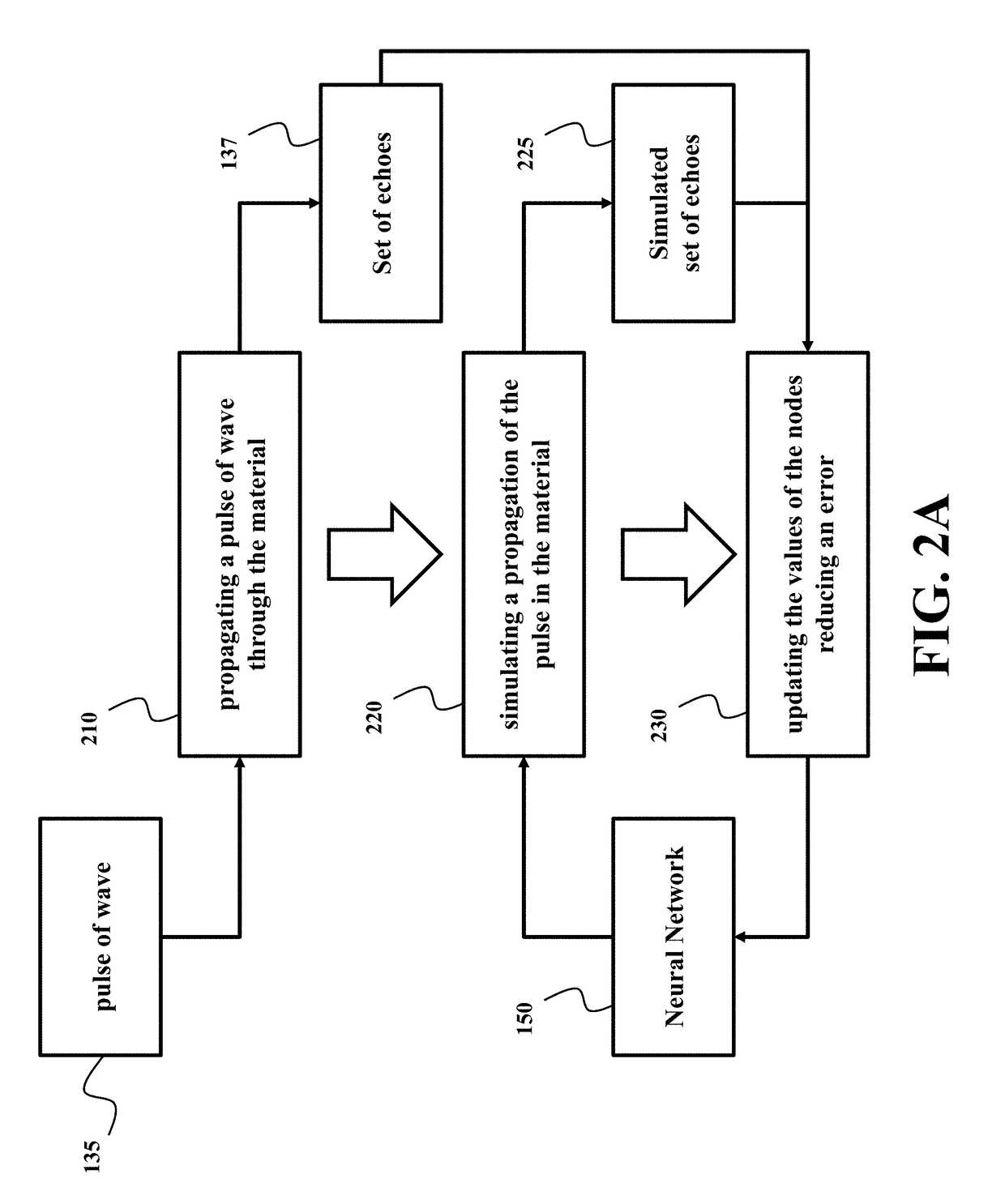System and Method for Determining Structure of Material
a technology of material structure and sensing system, applied in the direction of resistance/reactance/impedence, material analysis, instruments, etc., can solve the problems of more determination and cluttering of reconstructed images, and achieve the effect of reducing errors and reducing errors
- Summary
- Abstract
- Description
- Claims
- Application Information
AI Technical Summary
Benefits of technology
Problems solved by technology
Method used
Image
Examples
Embodiment Construction
[0020]FIG. 1 shows a block diagram of a permittivity sensor for determining an image 110 of a distribution of permittivity of a material 120 according to one embodiment of the invention. The permittivity sensor includes at least one transceiver 130 to propagate a pulse of wave 135 through the material 120 and to receive a set of echoes 137 resulted from scattering the pulse by different portions of the material.
[0021]For example, the transceiver can include at least one transmitter that transmits the pulse through the material, such that the pulse scattered by the material produces the set of echoes 137. The pulse can be any type of electromagnetic or optical waves, such as one or combination of a microwave pulse, a radar pulse, a laser pulse, an ultrasound pulse, an acoustic pulse. The transceiver can also include at least one receiver arranged at a predetermined location with respect to the transmitter for receiving the set of echoes 137. According to different embodiments, the pe...
PUM
| Property | Measurement | Unit |
|---|---|---|
| permittivity | aaaaa | aaaaa |
| weights | aaaaa | aaaaa |
| dielectric permittivity | aaaaa | aaaaa |
Abstract
Description
Claims
Application Information
 Login to View More
Login to View More - R&D
- Intellectual Property
- Life Sciences
- Materials
- Tech Scout
- Unparalleled Data Quality
- Higher Quality Content
- 60% Fewer Hallucinations
Browse by: Latest US Patents, China's latest patents, Technical Efficacy Thesaurus, Application Domain, Technology Topic, Popular Technical Reports.
© 2025 PatSnap. All rights reserved.Legal|Privacy policy|Modern Slavery Act Transparency Statement|Sitemap|About US| Contact US: help@patsnap.com



